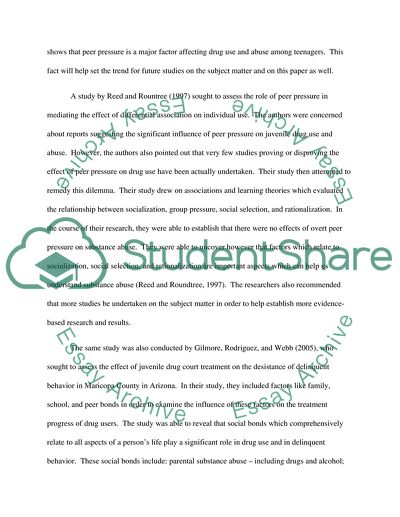Cite this document
(Drugs in the United States: Juveniles and the Use of Drugs Dissertation, n.d.)
Drugs in the United States: Juveniles and the Use of Drugs Dissertation. Retrieved from https://studentshare.org/law/1727892-drugs-in-the-united-states-juveniles-and-the-use-of-drugs-in-this-paper-you-are-going-to-describe-the-reason-why-juveniles-use-drugs-the-consequences-of-their-actions-and-the-harm-they-do-to-our-society
Drugs in the United States: Juveniles and the Use of Drugs Dissertation. Retrieved from https://studentshare.org/law/1727892-drugs-in-the-united-states-juveniles-and-the-use-of-drugs-in-this-paper-you-are-going-to-describe-the-reason-why-juveniles-use-drugs-the-consequences-of-their-actions-and-the-harm-they-do-to-our-society
(Drugs in the United States: Juveniles and the Use of Drugs Dissertation)
Drugs in the United States: Juveniles and the Use of Drugs Dissertation. https://studentshare.org/law/1727892-drugs-in-the-united-states-juveniles-and-the-use-of-drugs-in-this-paper-you-are-going-to-describe-the-reason-why-juveniles-use-drugs-the-consequences-of-their-actions-and-the-harm-they-do-to-our-society.
Drugs in the United States: Juveniles and the Use of Drugs Dissertation. https://studentshare.org/law/1727892-drugs-in-the-united-states-juveniles-and-the-use-of-drugs-in-this-paper-you-are-going-to-describe-the-reason-why-juveniles-use-drugs-the-consequences-of-their-actions-and-the-harm-they-do-to-our-society.
“Drugs in the United States: Juveniles and the Use of Drugs Dissertation”, n.d. https://studentshare.org/law/1727892-drugs-in-the-united-states-juveniles-and-the-use-of-drugs-in-this-paper-you-are-going-to-describe-the-reason-why-juveniles-use-drugs-the-consequences-of-their-actions-and-the-harm-they-do-to-our-society.


